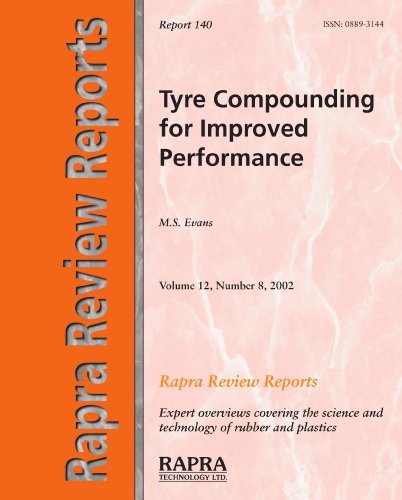

Most ebook files are in PDF format, so you can easily read them using various software such as Foxit Reader or directly on the Google Chrome browser.
Some ebook files are released by publishers in other formats such as .awz, .mobi, .epub, .fb2, etc. You may need to install specific software to read these formats on mobile/PC, such as Calibre.
Please read the tutorial at this link: https://ebookbell.com/faq
We offer FREE conversion to the popular formats you request; however, this may take some time. Therefore, right after payment, please email us, and we will try to provide the service as quickly as possible.
For some exceptional file formats or broken links (if any), please refrain from opening any disputes. Instead, email us first, and we will try to assist within a maximum of 6 hours.
EbookBell Team

5.0
78 reviews
ISBN 10: 1859573061
ISBN 13: 978-1859573068
Author: Evans
This is an overview of the factors tyre compounders and engineers must consider when developing compounds for tyres, to meet the demanding performance requirements of the 21st Century. It provides an excellent introduction to a complex subject, but will be of interest to the tyre and automotive industries as it covers the latest developments and future prospects for tyres and tyre compounds, and is well referenced. Tyres must support the load of the vehicle, transmit the driving, braking and cornering forces from the vehicle in all weather conditions, envelop obstacles in the road without detracting from ride comfort, and, above all, tyres should not puncture and fail during use. Tyres comprise several different components, each with potentially varying the inner liner, the carcass, the bead, the apex, the sidewall, the belt, the cap-ply and the tread. These are described separately. Tyre performance is measured in a number of different ways, and the application of the tyre itself will influence the choice of tests. The key performance properties for tyres have been described as the 'magic triangle', i.e., rolling resistance, wear and wet grip. requirements for the tyre and to relate the test results on built tyres to the rubber compounds and processes used in production. This review discusses compounding ingredients for tyre rubbers by class including polymer types. Compounds are tested before being used, examining properties such as rheological behaviour and tensile and tear strength. The future of tyres in vehicles is outlined. There is potential for tyres to include sensors to provide feedback about road conditions to vehicle control systems. In addition, most manufacturers now have products which will run for a short distance even after air is lost, made using much stiffer sidewall compounds.
Chapter1 : Introduction
Chapter 2: Content
Chapter 3: Conclusion
Chapter 4: Appendices
Chapter 5: Glossary
Chapter 6: References
Chapter 7: Index
tyre performance comparison
vigorous tyres review
tyre compounding for improved performance pdf
tire compounding
tyre compounding